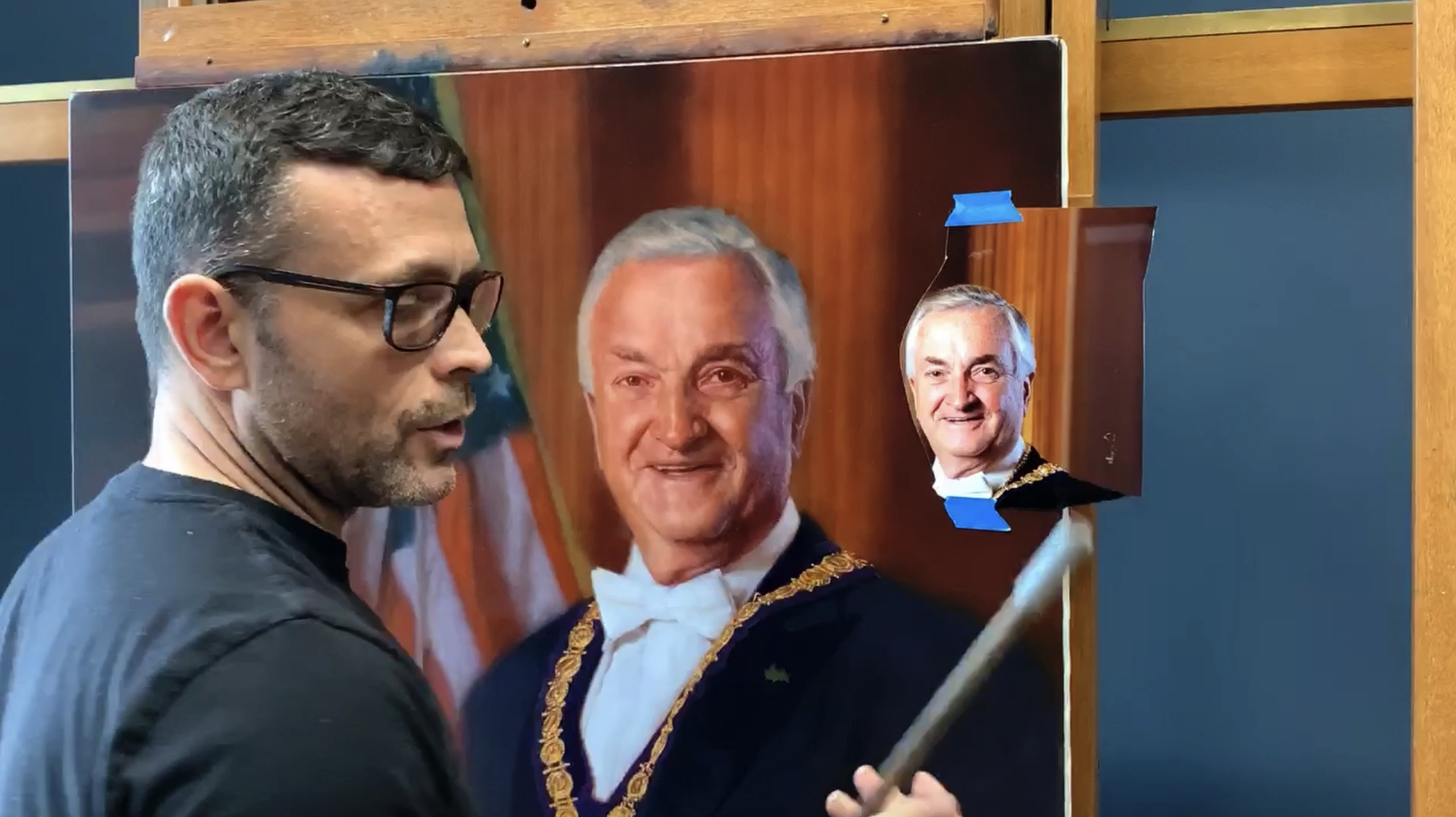
Evolve Founder and master portraitist shares his guide to where to start a portrait.
Painting a portrait and don’t know where to begin? Most people think that painting portraits is nearly impossible and the hardest thing to paint. Master portraitist and Evolve Founder Kevin Murphy teaches us where to start a portrait. Hint: it’s not in the details!
Kevin Murphy's Portrait Experience
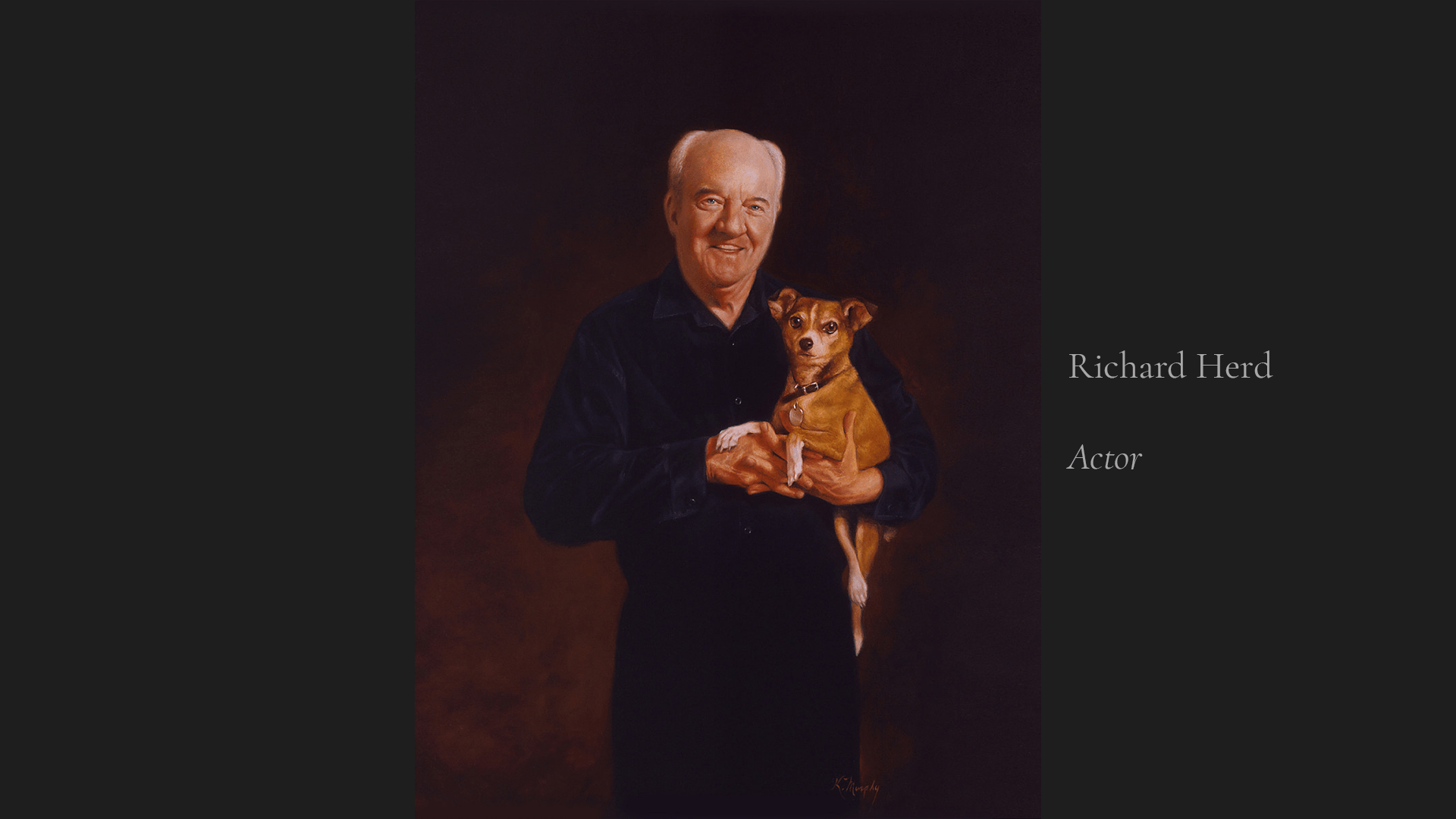
Evolve Founder Kevin Murphy has built a career in painting portraits.
I (Evolve Founder Kevin Murphy) have been a portrait painter for 20 years. It's an area of expertise for me. I have built a career that spanned 20 years doing nothing but portraits. My experience has been that the thing that trips people up the most is that they think differently about portraits than they do about painting something else.
Mistake #1: Treating Portraits Differently
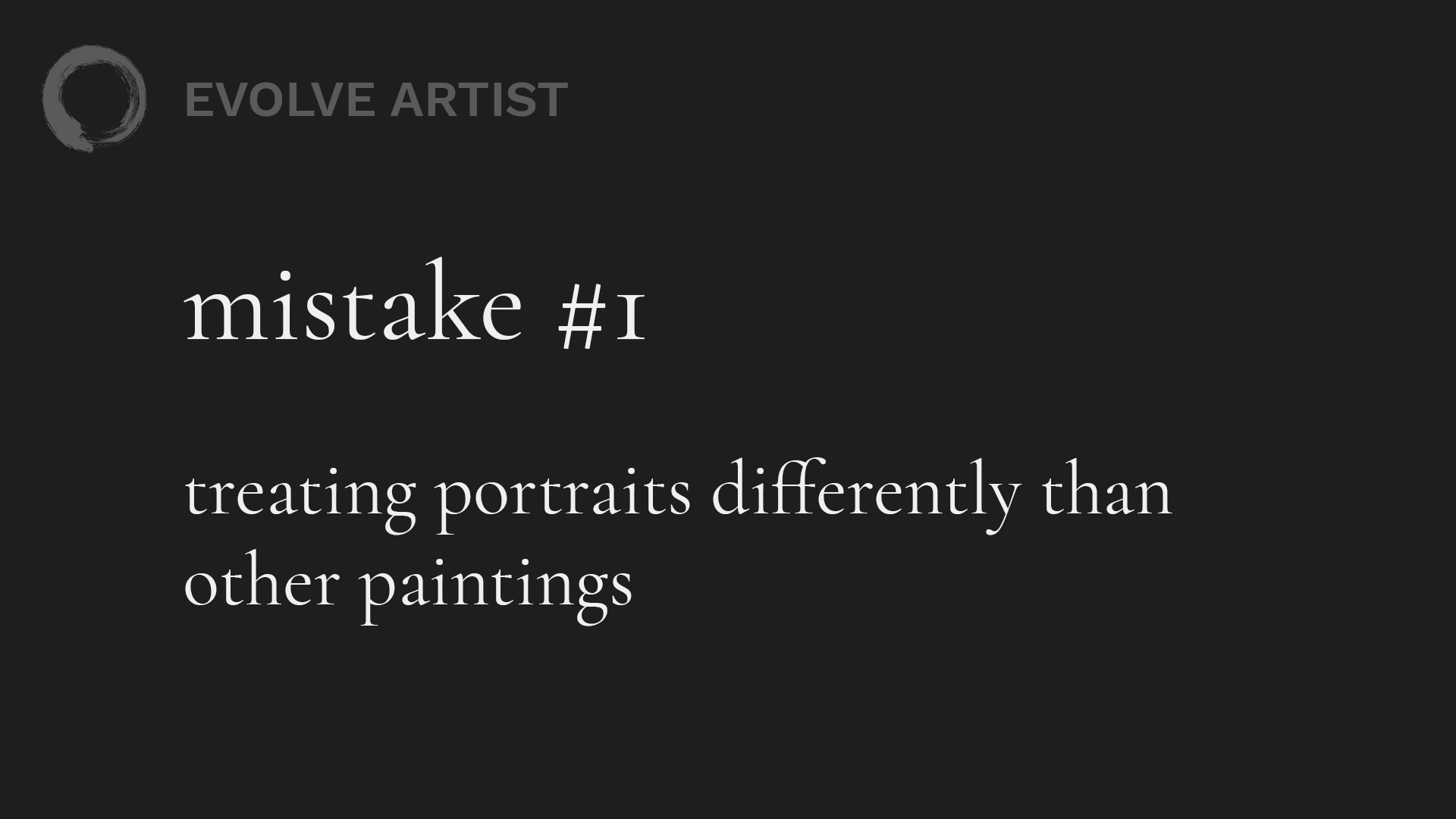
Approaching where to start a portrait should be the same as approaching a simple still life.
If we paint a still life, it's pretty simple. When we tackle it, it's pretty straightforward. Our approach to where to start a portrait can be simple and straightforward too.
Mistake #2: "Paint What You See"
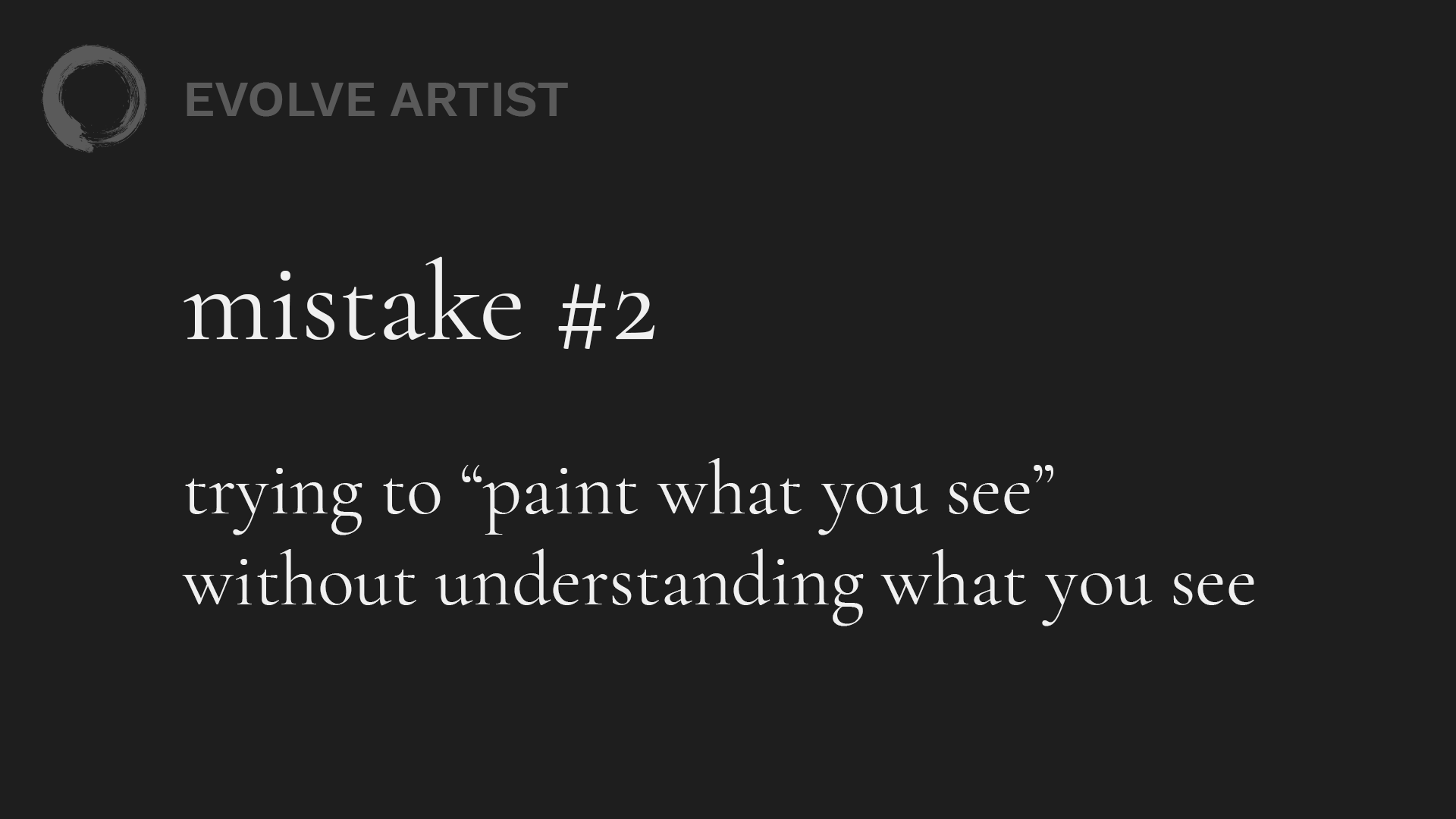
In order to "paint what we see" we must first train our perception to see accurately.
For most people who haven't been trained in how to make art (and sadly, for a very large percentage of people who have been to colleges and learned to make art), they've been taught to paint what they see. That is a catastrophe waiting to happen.
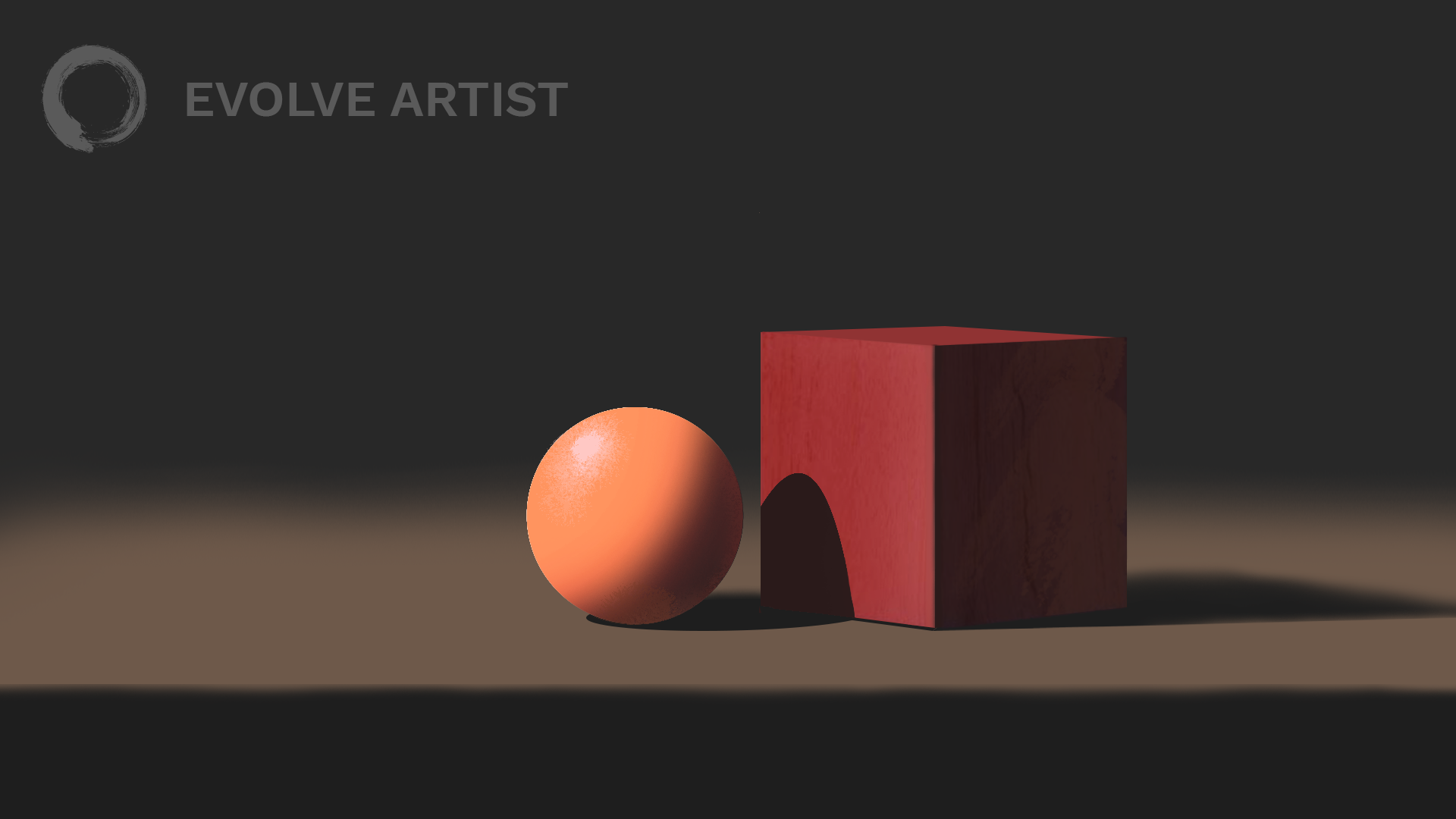
A simple painting of a ball and a cube is easy to approach. We can use the same simple approach to starting a portrait.
For example, when you put a ball and a cube on a table, it's very easy to see the objects and make sense of it. There is no overwhelming number of details or decisions to make.

"Painting what you see" with a complex subject such as a portrait can easily become overwhelming.
However, when you try to paint a portrait that way, the amount of information that you're taking in is almost incalculable. If you were trying to paint what you see, it turns what could be a very simple painting into an unclimbable mountain.
Step 1: Simplify Your Process
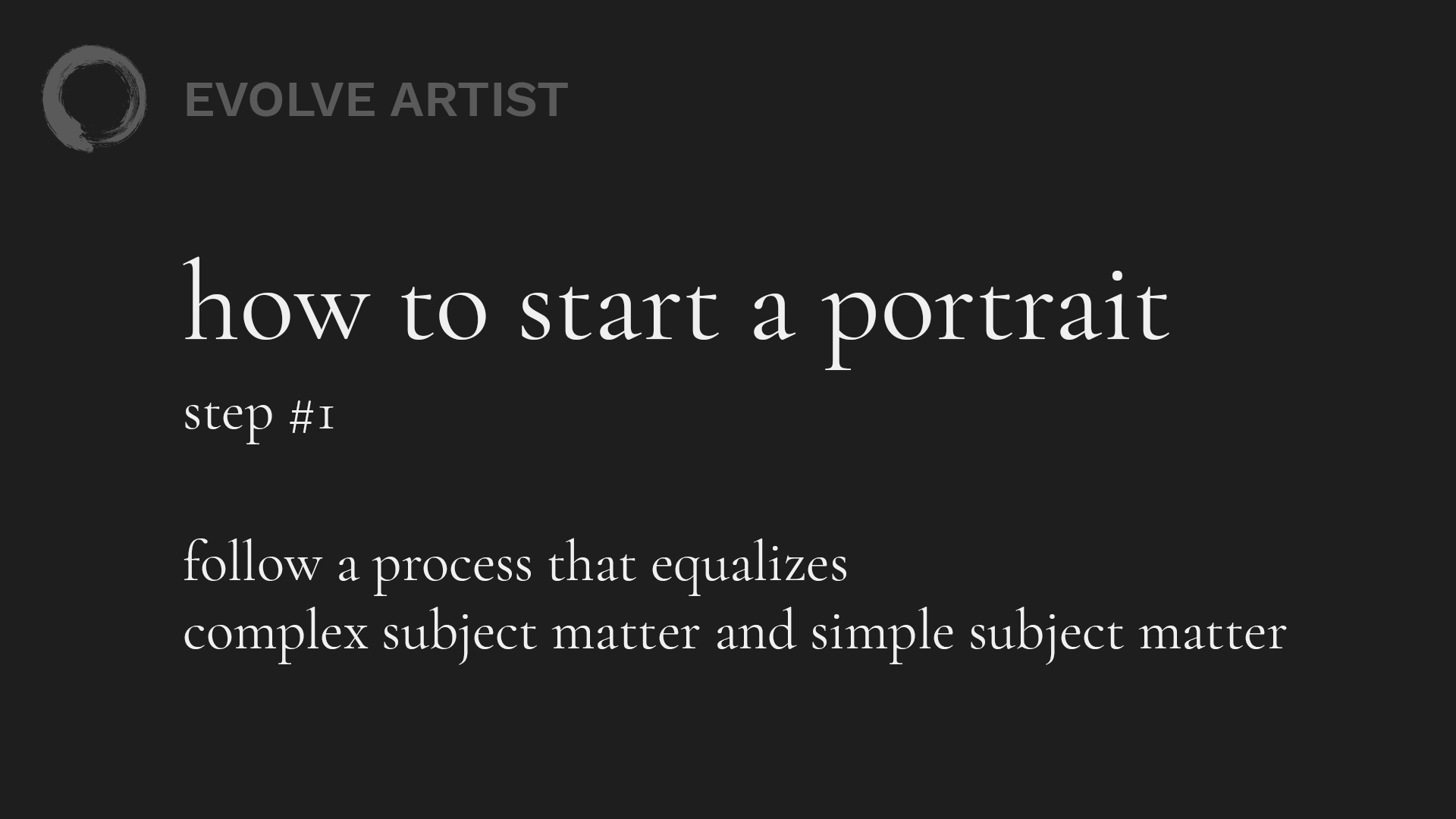
The first step in starting a portrait is to have the right process.
When you're deciding where to start a portrait, the first thing you need is to have a process that equalizes complex subject matter and simple subject matter so that a portrait and a ball and a cube are basically the same things. The same tools are applied.
At Evolve Artist, we start in grayscale and we think in terms of shadows and lights and then the edges that connect them.
(Click to read more about Evolve Artist 's approach to VALUES and EDGES.)
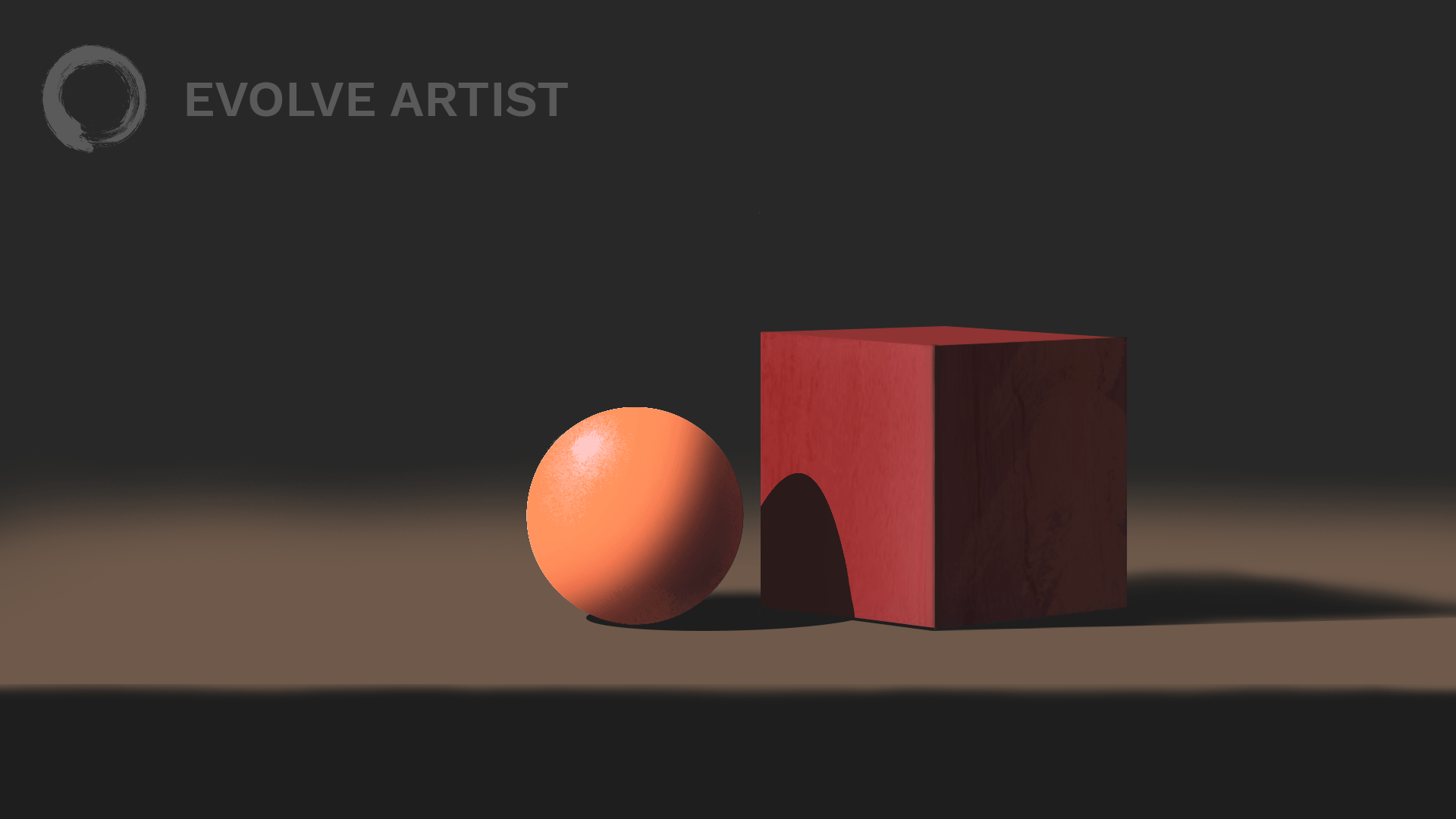
To approach a simple subject matter such as a ball and a cube, you begin by finding your values and edges.
A ball and a cube are comprised of shadow shades and light shades, and they have edges, either sharp or grade, that connects them.
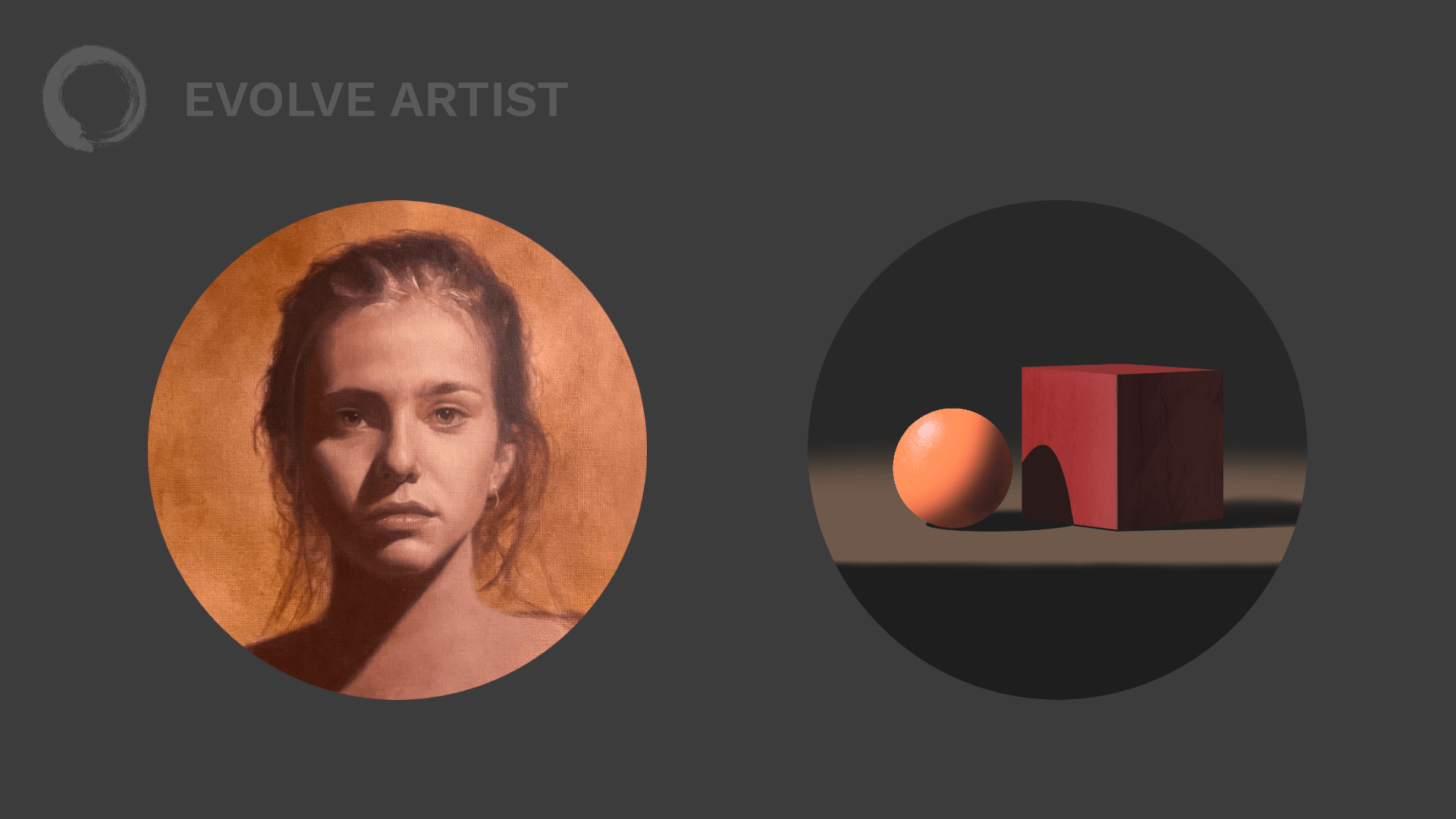
The approach to painting both simple and complex subject matter such as a still life or a portrait is exactly the same.
A face is exactly the same. Exactly the same. It doesn't have any extra parts if you're doing it in grayscale.
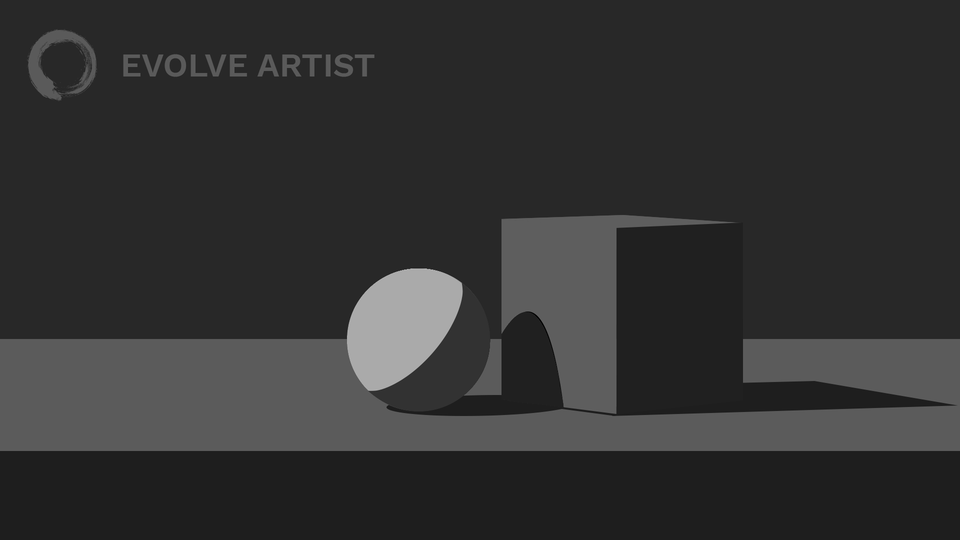
Painting in color, regardless of the complexity of the subject matter, still begins with identifying the values and edges.
If you're painting a red cube and an orange ball, you're now dealing in color value decisions. You'll be making decisions about how dark or light the red is and how dark or light the orange is. However, you're still dealing in lights and shadows as well as the edges that connect them, and a portrait is no different.
The idea is that if you have a structured approach to moving through a painting from blank canvas to finished art, it should work equally for simple and complex subject matter. That's the starting point.
Bad Advice from Art School
So many people go to art school and they spend a couple hundred thousand dollars and all they are taught is to "paint what you see." They're basically being given things and being told to see stuff. However, they're not taught a clear-cut process for simplifying the information that's in front of them, such as, how do you break down a face?
What happens then is that some people end up burning the candle at both ends and constantly working and pushing their skill further down the road. They start with simple things and they get a little more complex and a little more complex. Eventually, they work their way up to something like a portrait. But it's not a big jump.
They don't have a process that works. What they have is a process for the simple things, a process for the moderately complex, and another for complex things. They have different approaches for each subject until they've got some years of experience under their belt and they start to see how they connect.
For most people, the way they learned it is the way they teach it. This is common in art school.
Step 2: Start With Structure
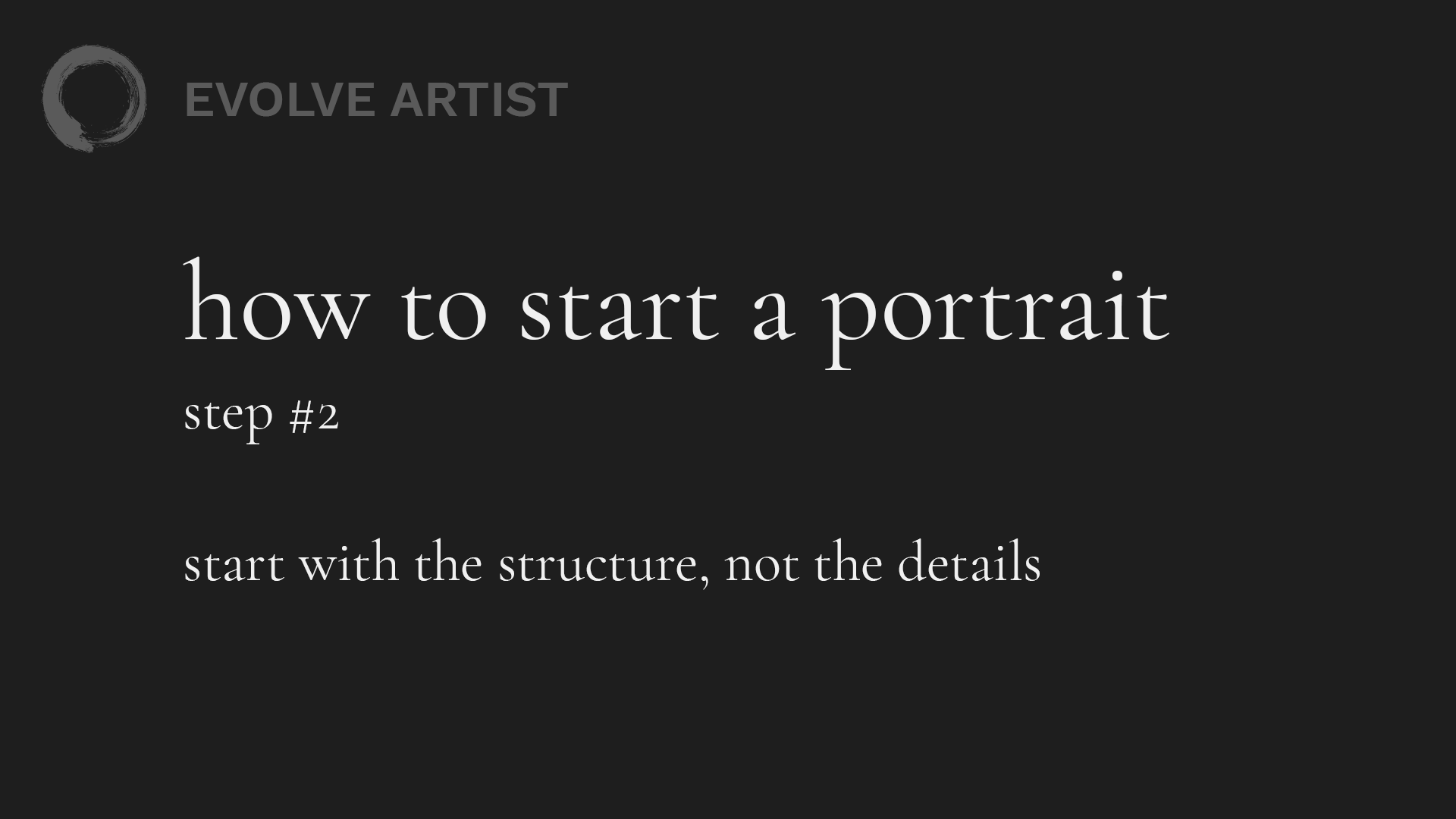
When starting a portrait it's important to begin with the structure of the face and head first.
In short, to be able to paint a portrait, you need to have a process that neutralizes the complexity at the beginning. This allows you to build the structure of the head of the face before you get into the details.
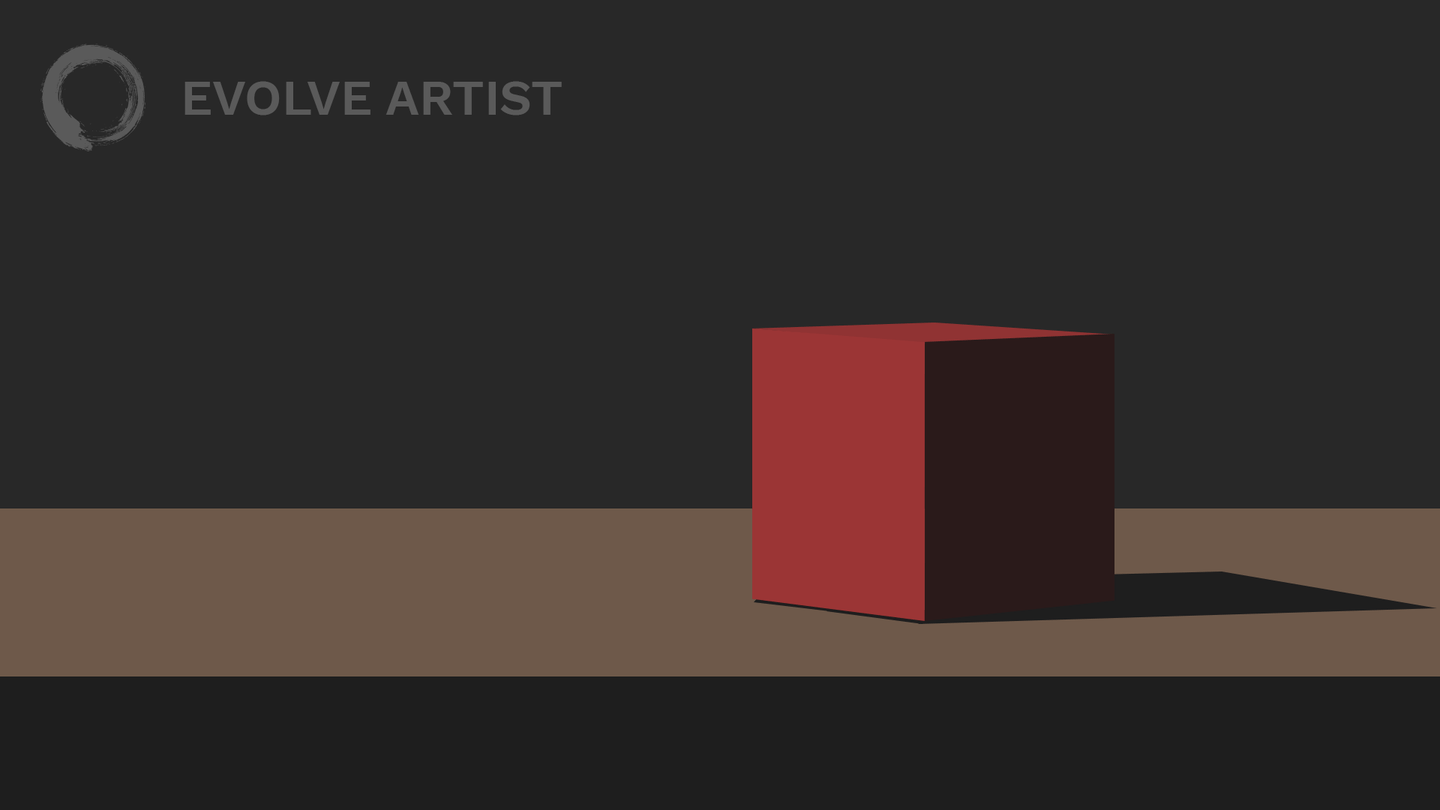
Starting with the structure allows us to identify the subject first before adding in the details.
If I were to paint a cube, it'd be very simple. One side is a shadow, one side is a light, and there's light on top. It starts out as a box.
Now, let's say that that cube is cut from wood and maybe it has some wood grain. Once I've got the structure of the cube in place, then I can turn my attention away from the structure that tells us it's a cube and start putting in the details.
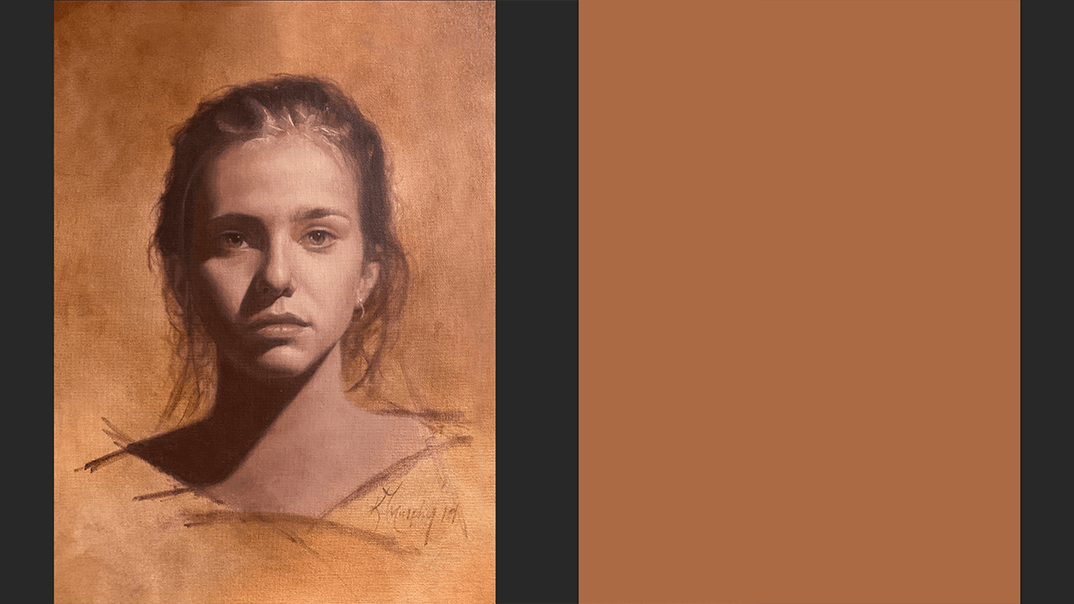
Even without the details, a portrait will begin to look like its subject with just the simple structure using values and edges.
With a face, if you start with the structure and get the structure right, it already looks like the person before you start dealing in details.
It’s Not in the Details
I want to show you just how irrelevant the details are compared to the structure. As I mentioned, a simple cube has, one shadow and two light shades, one on the side and one on the top.
Similarly, a face could be broken down into one shadow shade and one light shade.
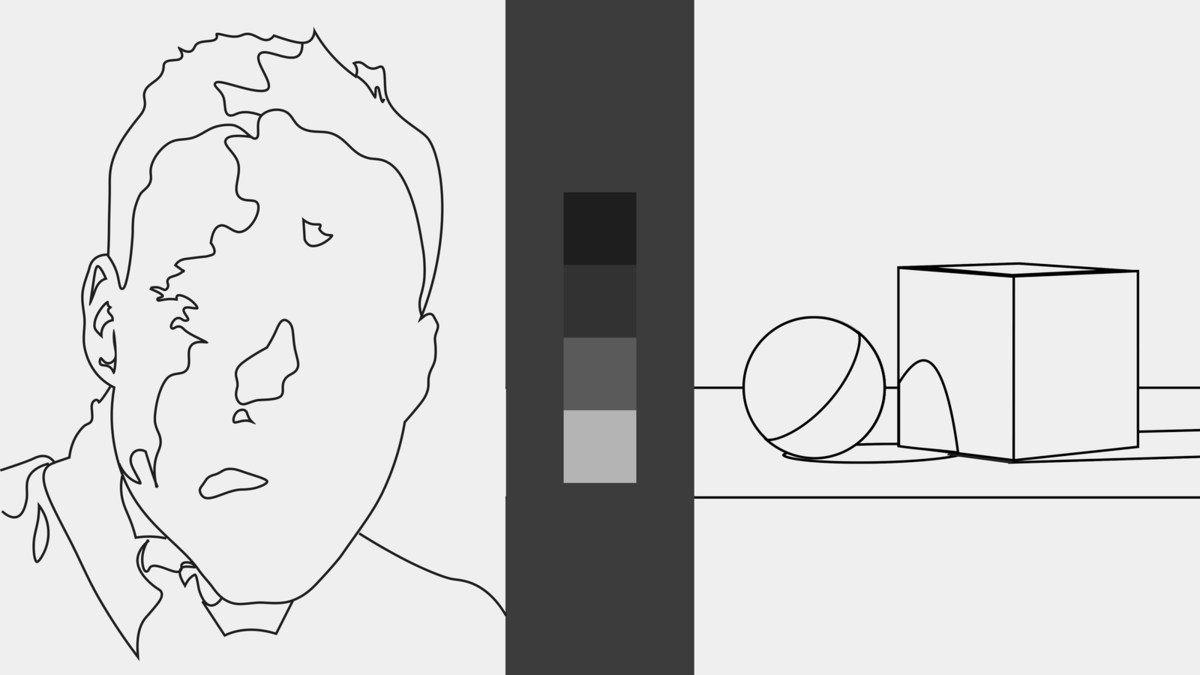
In this VIDEO, Evolve Artist's Daniel Folta walks you step-by-step through Evolve's Method of how to paint a portrait in grayscale.
Daniel Folta of Evolve Artist did a wonderful job of explaining how to break down a face. See his video HERE to see the simple step-by-step process in action.
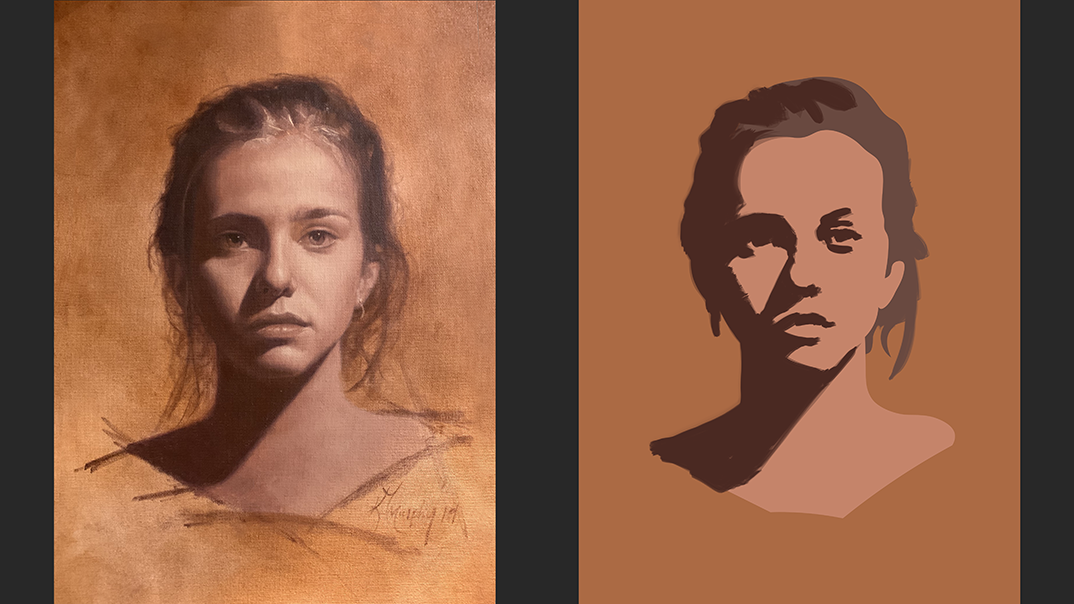
With just two values and the correct shape, the structure of the portrait will make the face immediately recognizable.
If you can create a shadow and a light and just get the shape of the shadow and the light right without any concern for the details (the eyes or nostrils or the mouth, or the ears), you'll be able to recognize the face right away. That's not even including any gradients. With just the two values following the contour of where the shadow and light meet, the structure of the face will be clear and recognizable.
Conclusion: Simplicity is Key
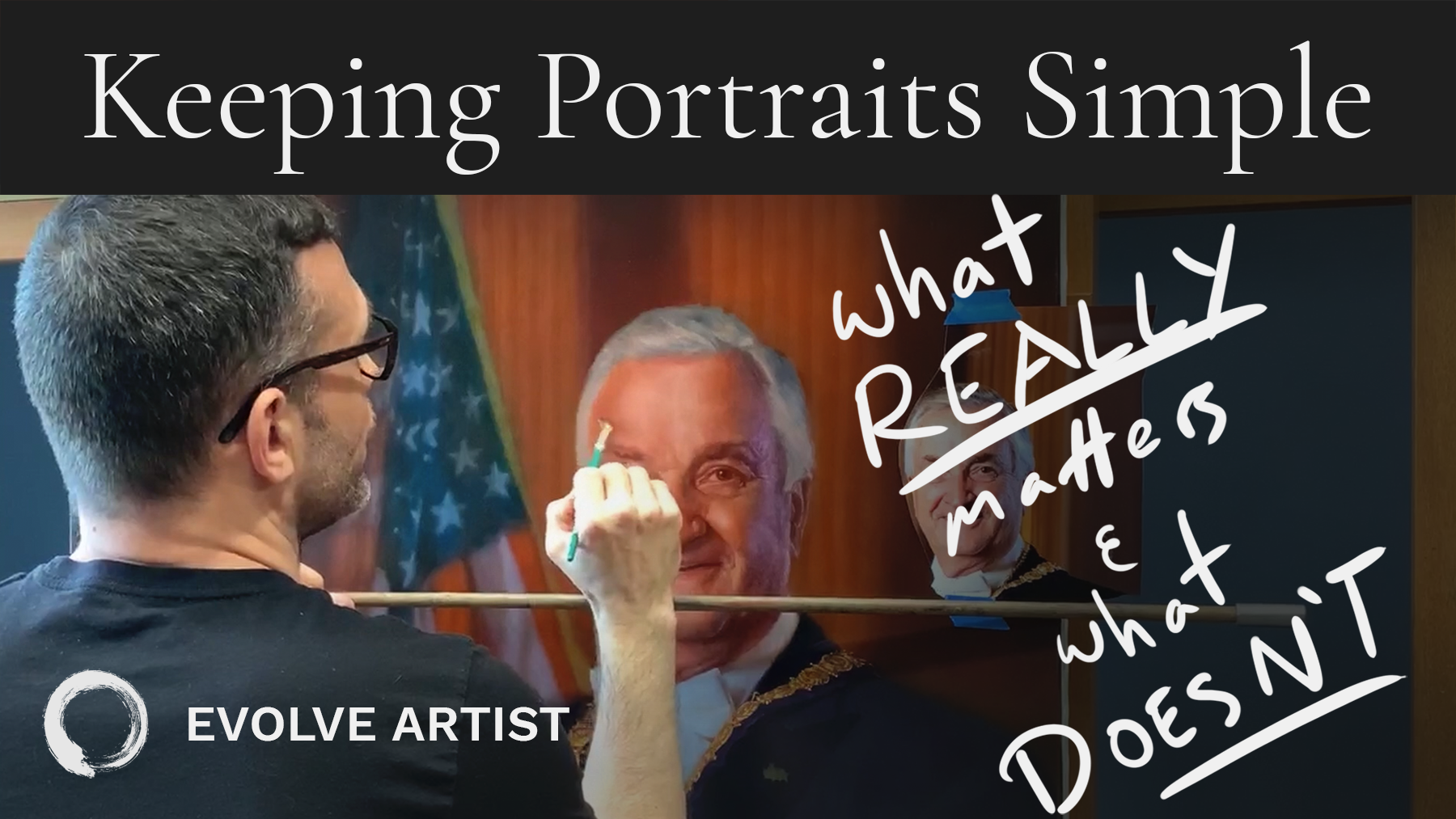
READ or WATCH the second post in the Master's Guide to Painting Better Portraits Series: How to Simplify Portrait Painting.
When you're deciding where to start a portrait, simplicity is key. Don't try to make a finished portrait. Develop the first stage. Get really good at it so that you've got confidence.
This is the first post from our Master's Guide to Painting Better Portraits series. Subscribe to stay posted!
Read the next posts in the series here:
Master's Guide #2: How to Simplify Portrait Painting
Master's Guide #3: How to Build Confidence in Portrait Painting
Master's Guide #4: How to Get a Likeness in Portrait Painting
Master's Guide #5: Quickest Method to Level Up Portrait Painting Skills
Master's Guide #6: How to Price Portrait Paintings
Master's Guide #7: How to Get Portrait Commissions
Master's Guide #8: Are Today's Portraitists Better Than the Old Masters?
If you found this post insightful and you want to get more content like this, then check us out on YouTube and follow us on Instagram.
Happy painting!
